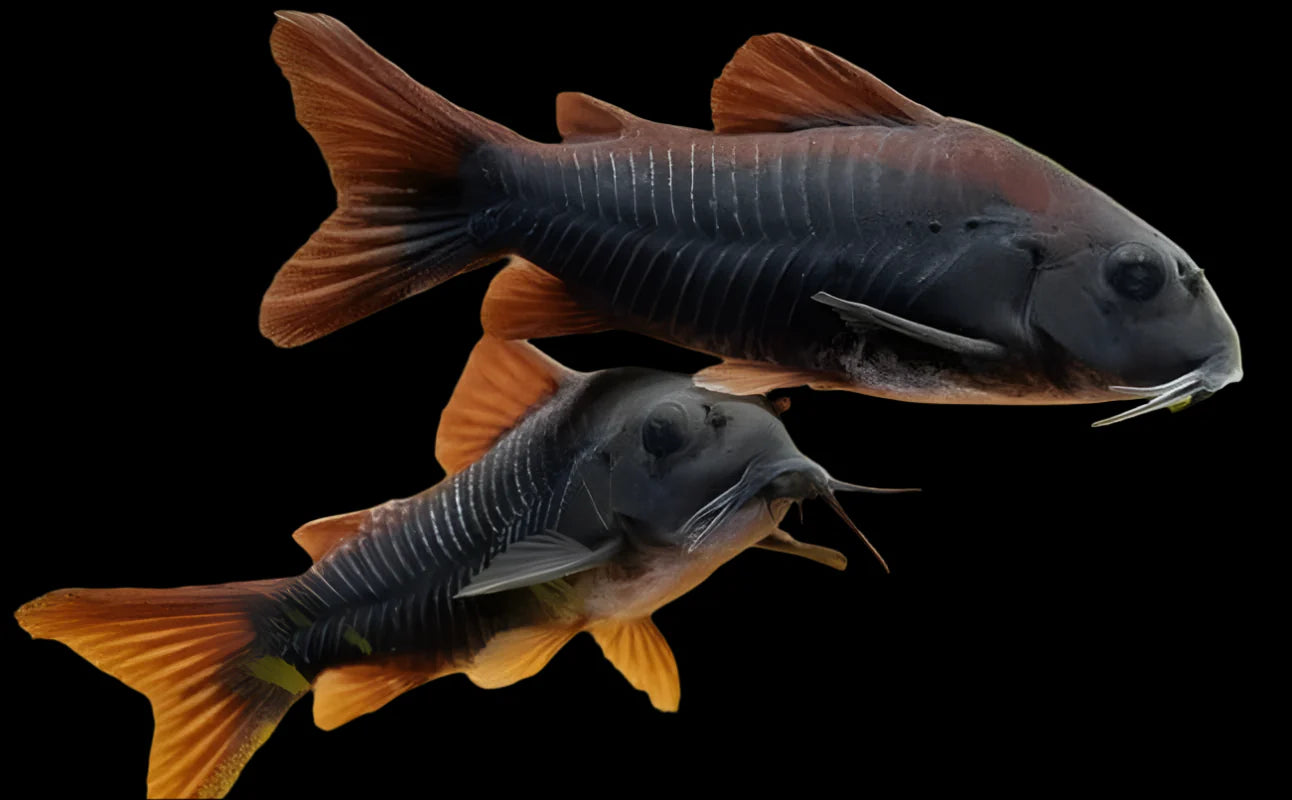Description
Venezuelan Black Corydoras – Stunning Dark Beauty for Your Tank
Bring a touch of mystery and elegance to your freshwater aquarium with the Venezuelan Black Corydoras (Corydoras venezuelanus), a unique and striking species that stands out with its deep black body and shimmering sheen. Native to the clear, slow-moving rivers of Venezuela, this corydoras variety is known for its stunning appearance and peaceful, bottom-dwelling nature.
With its sleek, almost jet-black body and subtle iridescence that glows under aquarium lighting, the Venezuelan Black Corydoras is not just a cleaning companion, but a true showstopper. They thrive in schools, adding both beauty and active behavior to your aquarium. Like other corydoras, they are efficient bottom feeders, helping to keep your substrate clean by scavenging leftover food and organic matter.
Key Features:
-
Striking Black Coloration: Sleek, deep black body with a soft, shimmering sheen that glows under the light
-
Peaceful and Social: Best kept in schools of 5 or more to encourage natural schooling behavior
-
Bottom Feeder: Excellent at scavenging uneaten food and organic debris, helping to keep the substrate clean
-
Great for Community Tanks: Non-aggressive and peaceful, perfect for aquariums with other calm, non-aggressive species
Care Guidelines:
-
Tank Size: Minimum 20 gallons for a small school
-
Water Temp: 72–78°F (22–26°C)
-
pH Range: 6.0–7.5
-
Diet: Omnivorous – sinking pellets, algae wafers, and occasional live or frozen foods
-
Lifespan: 5–7 years with proper care
Tip: Provide a soft, sandy substrate to protect their sensitive barbels and ensure there are plenty of hiding spots to help them feel secure.
Bring beauty, efficiency, and peaceful activity to your tank with the Venezuelan Black Corydoras — a unique and stunning addition that thrives in both biotope and community aquariums.
Click & Collect
Livestock will only be bagged once you arrive, or if you contact us in advance to request it ready beforehand.
Local Delivery
Order anything from our in-store range and have it delivered right to you.
-
Minimum spend: £50
-
Delivery up to 10 miles: £10
-
Delivery up to 25 miles: £20
Distances are measured “as the crow flies”, not by road.
Once your order is placed, we’ll be in touch to arrange a suitable delivery date and time.
Please note, delivery may take a little longer as we often group orders together to build an efficient delivery run.
Important: If you’re ordering a large aquarium, please ensure someone is available to help unload the van on arrival.
Dry Goods Delivery
-
DX Express: 1 working day, same-day dispatch before noon 0-75kg
-
Express Pallet: 1–3 working days 75-500kg
If you'd like to add more items to an existing order that hasn't yet been dispatched, please place a Click & Collect order and leave a note asking us to combine the orders.
Please note: We currently only dispatch parcels Wednesday to Friday.
Pre-Order
Want the full details? Check out our Terms & Conditions.
Livestock Delivery
Thursday Delivery – £24
-
Dispatched Wednesday afternoon
-
Delivered Thursday before 1pm
-
Order by Wednesday 12 noon
-
Minimum spend: £50
Friday Delivery – £24
-
Dispatched Thursday afternoon
-
Delivered Friday before 1pm
-
Order by Thursday 12 noon
-
Minimum spend: £50
Saturday Delivery – £29
-
Dispatched Friday afternoon
-
Delivered Saturday before 1pm
-
Order by Friday 12 noon
-
Minimum spend: £50
📦 Want to Add to an Existing Order?
No problem! Just place a Click & Collect order and leave a note asking us to link it with your original one (as long as it hasn’t been dispatched yet).
🛒 Dry Goods Now Included!
You can now include dry goods in your livestock delivery – perfect for topping up supplies in one go.
❄️ Please note: We can’t send frozen food with livestock – please order frozen items separately.
⚠️ Delivery Exclusions
Unfortunately, we’re unable to deliver livestock to the following postcodes:
Scotland & Isles:
AB30–AB56, DD8–DD10, DG3–DG9, DG12–DG14, FK17–FK21, KA18–KA19, KA26–KA30, PA20–PA38, PA80, PH3–PH40
Cornwall Isles: TR21–TR25
All of the following postcodes are excluded:
BT, HS, IM, IV, JE, KW
Plus Channel Islands and Shetland Islands
Payment & Security
Your payment information is processed securely. We do not store credit card details nor have access to your credit card information.

